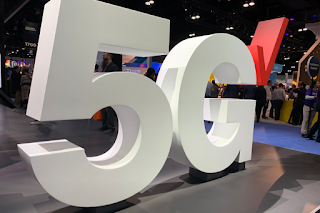Verizon plans to increase in capacity and speed on is 5G Ultra Wideband network with the addition of CBRS spectrum.
Working with Ericsson, Verizon has completed a 5G data session using CBRS General Authorized Access (GAA) spectrum. The company said it is ready to support 5G on both shared and Priority Access License (PAL) CBRS spectrum. This will supplement Verizon’s current deployment of 5G service over C-band and mmWave spectrum. Historically, Verizon has used shared and licensed CBRS spectrum to supplement its low and mid band deployment of 4G LTE service and private network offerings. With this successful trial and CBRS licenses in markets across the nation, Verizon is positioned to expand its 5G network to this new spectrum in parallel with its ongoing 5G deployment on C-band.
The CBRS band is made up of 150 MHz of 3.5 GHz shared spectrum. CBRS uses multi-tiered sharing with existing incumbents. Tier 1 are incumbents with protected status, including: DoD Navy ship radars, registered fixed satellite stations (Receive-only earth stations). Tier 2 are Priority Access Licenses (PAL), while Tier 3 is for General Authorized (GAA) channels. The FCC has authorized shared use and priority access use of this band for commercial wireless data, and Verizon has been leading the way in creating an ecosystem around the use of CBRS spectrum.
“The use of GAA and PAL licensed CBRS spectrum for 5G service further strengthens our already robust spectrum portfolio and will lead to an even better customer experience when using Verizon 5G Ultra Wideband,” said Kyle Malady, EVP and President, Global Networks and Technology. “Verizon leads the industry with the strongest spectrum portfolio across low, mid and high band spectrum. Our strong spectrum position is a result of multi-year strategic planning and investment.”
https://www.verizon.com/about/news/verizon-5g-ultra-wideband-availability-cbrs-spectrum










